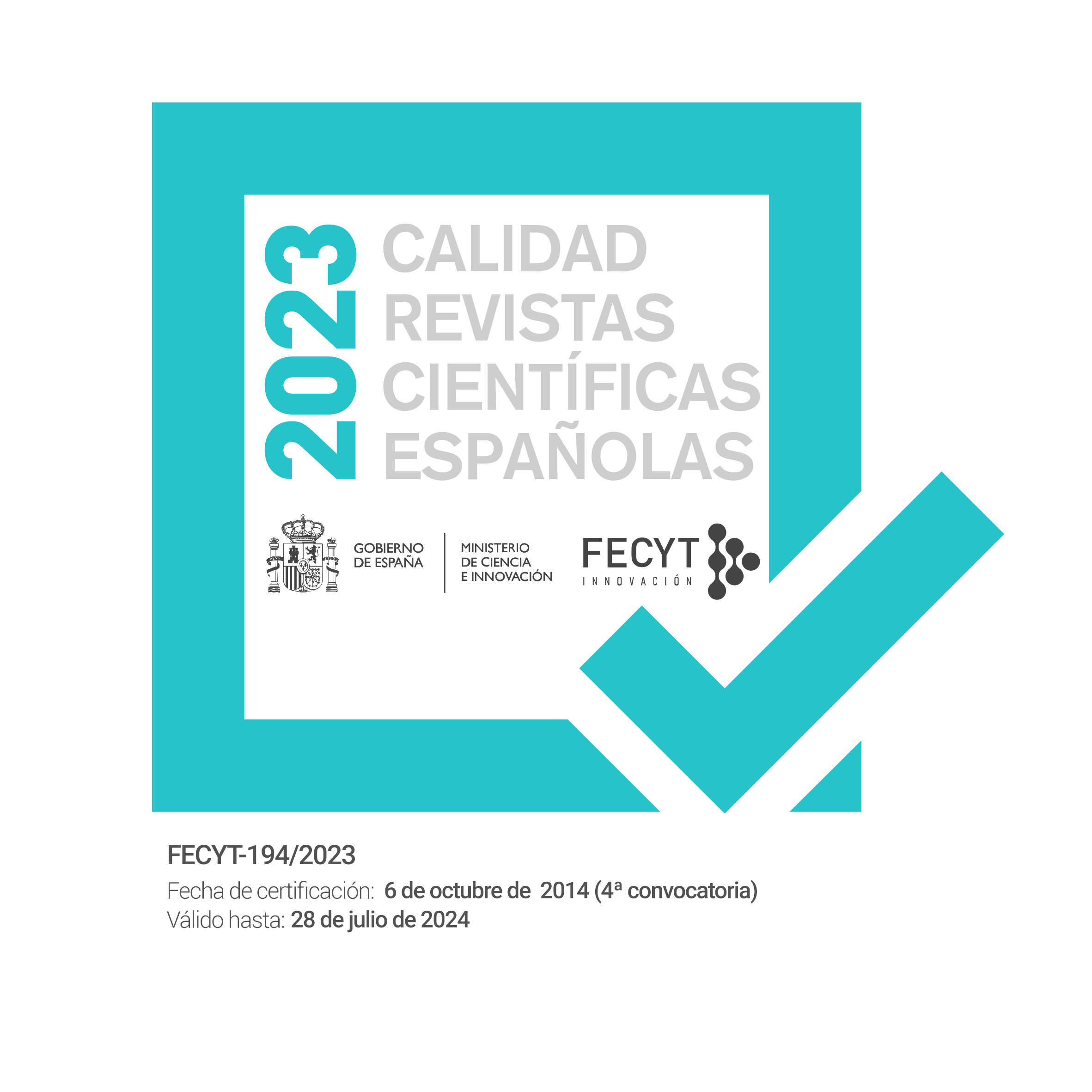Envíos
Lista de comprobación para la preparación de envíos
Como parte del proceso de envío, los autores/as están obligados a comprobar que su envío cumpla todos los elementos que se muestran a continuación. Se devolverán a los autores/as aquellos envíos que no cumplan estas directrices.- La petición no ha sido publicada previamente, ni se ha presentado a otra revista (o se ha proporcionado una explicación en Comentarios al editor).
- El fichero enviado está en formato OpenOffice, Microsoft Word, RTF, o WordPerfect.
- Se han añadido direcciones web para las referencias donde ha sido posible.
- El texto tiene interlineado simple; el tamaño de fuente es 12 puntos; se usa cursiva en vez de subrayado (exceptuando las direcciones URL); y todas las ilustraciones, figuras y tablas están dentro del texto en el sitio que les corresponde y no al final del todo.
- El texto cumple con los requisitos bibliográficos y de estilo indicados en las Directrices para autores/as, que se pueden encontrar en Acerca de la revista.
- Si está enviando a una sección de la revista que se revisa por pares, tiene que asegurarse que las instrucciones del apartado "Garantizar una evaluación por pares anónima" han sido seguidas.
- Tu fichero está anonimizado. Recuerda que, para anonimizar un fichero Word, debes utilizar el menú de propiedades del fichero, seleccionar la pestaña Detalles y encontrarás una opción para “Suprimir las propiedades y la información personal”.
Declaración de privacidad
El responsable del tratamiento de los datos de carácter personal aportados para las revistas a las que da acceso FECYT es la Revista Española de Ciencia Política (RECP). Para consultar la información adicional y detallada sobre protección de datos puede ponerse en contacto con la Revista Española de Ciencia Política (RECP) dirigiéndose a la dirección indicada en “acerca de/contacto”.
Asimismo, se le informa que FECYT actúa como Encargado de Tratamiento de cada uno de los ficheros cuya titularidad es de las diferentes revistas. Por tanto, la FECYT, facilita el ejercicio de sus derechos de acceso, de rectificación, de supresión, a la limitación del tratamiento, a la portabilidad de los datos, de oposición y a no ser objeto de decisiones individuales automatizadas, incluida la elaboración de perfiles dirigiéndose a la sede de la FECYT, sita en C/ Pintor Murillo 15, 28100 Alcobendas (Madrid, ES), o bien solicitándolo por email a la dirección protecciondatos@fecyt.es, acompañando acreditación de su identidad.
Puede consultar el aviso legal y la política de privacidad de FECYT pulsando aquí





